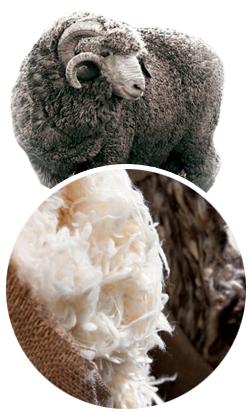Wool Felt Characteristics

Compressed wool felt belongs among the oldest textile materials used by the majority of industries for various purposes.
Wool felt has a textile structure consisting of fibres that are permanently entangled and unified according to the degree of automation, chemical influence, and moisture used, without applying knitting, weaving, stitching, heat sealing, or gluing.
Wool felt can be created from exclusively from one type of wool fibre, or as a blend of new and recycled wool fibres mixed with artificial fibres, vegetable fibres, etc.
Characteristics of waves
- wool absorbs 40% of water and 100% of moisture (e.g. wool absorbs sweat well)
- hydrophobic and hydrophilic qualities
- best absorbency in comparison with other fibres
- fire resistant, will not melt
- ignition point of 600°C
- decomposing ability
- renewable material

Environmental protection and the impact of wool on the Environment
Wool felt is a traditional material in the history of humankind. It is safe for the environment, with the possibility of biological disposal, with a special focus on environmental improvement and healthy fauna and flora. Wool felt products are good examples of ecological industrialisation.





